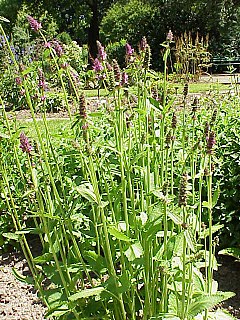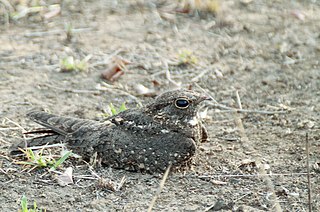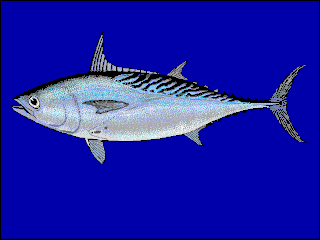Related Research Articles

The western Mosquitofish is a species of freshwater fish, also known commonly, if ambiguously, as simply Mosquitofish or by its generic name, Gambusia, or by the common name gambezi. Its sister species, the eastern mosquitofish is also referred to by these names.

The lesser scaup is a small North American diving duck that migrates south as far as Central America in winter. It is colloquially known as the little bluebill or broadbill because of its distinctive blue bill. The origin of the name scaup may stem from the bird's preference for feeding on scalp—the Scottish word for clams, oysters, and mussels; however, some credit it to the female's discordant scaup call as the name's source. It is apparently a very close relative of the Holarctic greater scaup or "bluebill", with which it forms a superspecies. The scientific name is derived from Ancient Greek aithuia an unidentified seabird mentioned by authors including Hesychius and Aristotle, and Latin, affinis "related to", from its resemblance to the greater scaup.

The little swift, is a small species of swift found in Africa and southwestern Asia, and are vagrants and local breeders in southern Europe. They are found both in urban areas and at rocky cliffs where they build nests in a way typical of all members of the order Apodiformes. The genus name Apus is Latin for a swift, thought by the ancients to be a type of swallow without feet. The Latin specific affinis means similar to or related to, but in this case the species that the little swift supposedly resembles is not clear from the description. A population formerly considered to be an eastern subspecies of little swift is now separated as a distinct species, the house swift.

The yellow-billed babbler is a member of the family Leiothrichidae endemic to southern India and Sri Lanka. The yellow-billed babbler is a common resident breeding bird in Sri Lanka and southern India. Its habitat is scrub, cultivation and garden land. This species, like most babblers, is not migratory, and has short rounded wings and a weak flight and is usually seen calling and foraging in groups. It is often mistaken for the jungle babbler, whose range overlaps in parts of southern India, although it has a distinctive call and tends to be found in more vegetated habitats. Its name is also confused with Turdoides leucocephala, which is also known as white-headed babbler.

Stachys affinis, commonly called crosne, Chinese artichoke, Japanese artichoke, knotroot, or artichoke betony, is a perennial herbaceous plant of the family Lamiaceae, originating from China. Its rhizome is a root vegetable that can be eaten raw, pickled, dried or cooked.
Limoncello is an Italian lemon liqueur mainly produced in Southern Italy, especially in the region around the Sorrentine Peninsula and the coast of Amalfi. In northern Italy, the liqueur is often referred to instead as limoncino. It is the second most popular liqueur in Italy and is traditionally served chilled as an after-dinner digestivo. It is also a popular homemade liqueur, with various recipes available online and in print.
Claosaurus is a genus of hadrosauroid that lived during the Late Cretaceous Period (Campanian).

The savanna nightjar is a species of nightjar found in South and Southeast Asia. Eight subspecies are recognised: C. a. monticolus, C. a. amoyensis, C. a. stictomus, C. a. affinis, C. a. timorensis, C. a. griseatus, C. a. mindanensis and C. a. propinquus. Its habitat is open forest and areas with scrub. Its length is about 25 cm (9.8 in). The upperparts are brownish-grey and vermiculated, with pale brown speckles. The underparts are brown, with bars. The savanna nightjar is nocturnal. Its call is a loud, repetitive chweep, mainly given in flight. The IUCN Red List has assessed the species to be of least concern because it has a large range and its population trend is stable.
The chocolate pipistrelle is a species of vesper bat in the family Vespertilionidae. It is found in China, India, Myanmar, Nepal, and Sri Lanka.

Blyth's frogmouth is a species of bird in the family Podargidae. It lives in the tropical and subtropical moist broadleaf forests of Brunei, Cambodia, Indonesia, Laos, Malaysia, Myanmar, Thailand, and Vietnam. It is sometimes considered conspecific with the Javan and Palawan frogmouths.

The black-chested jay is a species of bird in the family Corvidae.

The intermediate horseshoe bat is a bat species of the family Rhinolophidae that is very widespread throughout much of the Indian subcontinent, southern and central China and Southeast Asia.

Euthynnus affinis, the mackerel tuna, little tuna, wavyback skipjack tuna, kawakawa, or tongkol is a species of ray-finned bony fish in the family Scombridae, or mackerel family. It belongs to the tribe Thunnini, better known as the tunas. This is an Indo-Pacific species which is found from the Red Sea to French Polynesia.

The southern river terrapin is a turtle of the family Geoemydidae found in Malaysia, Indonesia and Cambodia.

"Crocodylus" affinis is an extinct species of crocodyloid from the Eocene of Wyoming. Fossils were first described from the Bridger Formation by American paleontologist Othniel Charles Marsh in 1871. Marsh described the species, along with every other species of crocodyloid in the Bridger Formation, under the genus Crocodylus. The known specimen of "Crocodylus" affinis is a skull found at Grizzly Buttes, Wyoming, measuring 13 inches in length on the upper surface. Recent phylogenetic studies of crocodyloids show that "C." affinis is not a species of Crocodylus, but a genus has not yet been erected to include the species. Other Bridger species such as Crocodylus clavis and Brachyuranochampsa zangerli have been synonymized with "C." affinis.

Bombus affinis, commonly known as the rusty patched bumble bee, is a species of bumblebee endemic to North America. Its historical range in North America has been throughout the east and upper Midwest of the United States, north to Ontario, Canada, where it is considered a "species at risk", east to Quebec, south to Georgia, and west to the Dakotas. Its numbers have declined in 87% of its historical habitat range. On January 10, 2017, the United States Fish and Wildlife Service placed B. affinis on the list of endangered species, making the rusty patched bumblebee the first bee to be added to the list in the continental United States.

Caprodon is a small genus of fish belonging to the subfamily Anthiinae. It contains three species.
Paramusonius peyrierasi is a species of beetle in the family Cerambycidae. It was described by Stephan von Breuning in 1980.

Blyth's paradise flycatcher, also called the oriental paradise flycatcher, is a species of bird in the family Monarchidae. It is native from southern China to Sumatra and Melanesia. Formerly, it was considered a subspecies of the Asian paradise flycatcher until elevated to species rank by the IOC in 2015.

Edoardo Affini is an Italian cyclist, who currently rides for UCI WorldTeam Team Jumbo–Visma. In October 2020, he was named in the startlist for the 2020 Giro d'Italia.
References
- ↑ BioLib.cz - Paramusonius affinis. Retrieved on 8 September 2014.